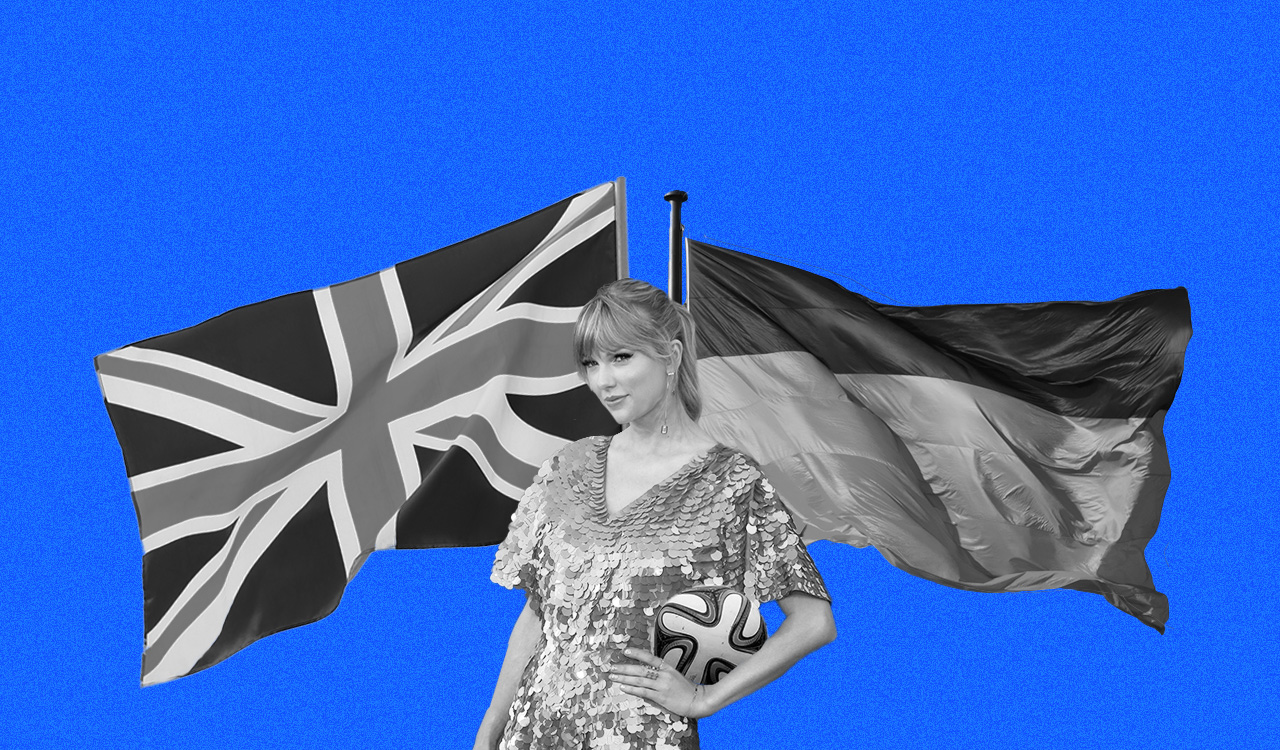I offer you a cautionary tale. Let us take a moment in the waning days of yet another summer we cannot bear to admit is about to end and consider the waning days of another vanishing season. This time, a season of our profound discontent.
The Summer of Our Discontent
Let us consider retail. And retailing. And retailers. And specifically, all the ridiculous tchotchkes and bad-for-us foodstuffs they offer, with them counting on us to show up and stock up. As we gear up for fall, dare we look at the consumer-centric sector of the economy with clear, penetrating scrutiny, or shall we once again mingle nostalgia with business-as-usual, just-give-us18-months-of-boosterism and a dollop of too-big-to-fail?
We have all born witness to the best retailers and consumer brands of our generation that have followed one another over the cliff like optimistic, perhaps delusional, lemmings heading for a rumored seaside holiday. The cadence of the forced march is remarkably consistent: We can acquire our way to growth. We can shrink our way to growth. We can proliferate our brand into all the nooks and crannies of every aisle.
Let me state the clear-eyed view: We have all born witness to the best retailers and consumer brands of our generation that have followed one another over the cliff like optimistic, perhaps delusional, lemmings heading for a rumored seaside holiday. The cadence of the forced march is remarkably consistent: We can acquire our way to growth. We can shrink our way to growth. We can proliferate our brand into all the nooks and crannies of every aisle. Yes, we can. Until of course, we can’t. We are playing dodgeball with inflation and humoring our customers through their change of position from freefall discretionary spending to full-stop frugality.
How Did We Get Here?
As with any drama, the narrative arc has many plot twists. One P&G executive succinctly told me: “One generation of marketers has addicted three generations of consumers to the heroin of price promotion.” Surely that’s a part of it. There’s been a willing suspension of belief in the power of brand value coupled with a nearly ubiquitous reliance on brand price, thereby eroding both margin and meaning, and creating a class of price loyal consumers. “Okay, available and cheap” has become the purchase criteria.
Retail has been remarkably slow to respond to changes in consumer behaviors. “Women like to shop” was the reliable mantra for executives of every retail category from fashion and home goods to grocery and drug. Yes, “women like to shop” until they don’t have to. Once offered ease, convenience and fair pricing, women loved even more to shop online, it turned out. Men and teens too.
Another factor has been the “otherness” of consumers. “The consumer is your wife,” David Ogilvy memorably and patriarchally told his clients. Until, of course, he had to amend the credo to include “husbands and wives.” And then again to “spouses and significant others.” All the while ignoring the reality that “the consumer is you” is the more accurate reality and the one which is nearly universally ignored by marketers and product developers creating merchandise they would never ever buy themselves.
Disconnect Mentality
Consider the level of cognitive dissonance required in the world of packaged foods. It’s an ecosystem in which employees of these companies are routinely offered healthy foods in the corporate cafeteria, encouraged to work out in the company gym, run the jogging trails and chant the refrain “one up and two down” when deciding whether to take the stairs or elevators at the office. Now consider that these same bright, eager MBAs are the very ones “innovating” to force feed “high value” to consumers with high fat, sugared and salted products while excusing their climb up this career ladder intoning “variety and moderation.” Reese’s Peanut Butter Cups with Pringles inside anyone?
There is a fundamental cynicism in the portfolio strategies of Big Food. You know the one: We’re going to create thirst through our salty snacks division, then we’re going to quench thirst through our sugary beverages. Nice. Imagine how wonderfully lucrative the “help create the problems profitably and then sell the solution too” strategy. “We respond to consumer demand” covers a multitude of caveat emptor shrugs.
The cynicism shows up too in Nike executives justifiably proud of the “Just Do It” slogan, so much so, in fact, they authorize its branding on XXXL tee-shirts. Then consider the drug chains pressed into service as opioid points of delivery. And the tobacco company brand managers deciding that candy-flavored nicotine devices are the best use of their time and talents.
Sea Changes
Small wonder The Great Resignation is upon us. One of the unexamined consequences of Covid was to put in sharp relief the limits of the real value contributed by a consumer economy and the prices we pay to fuel it.
The “failure of imagination” that prevented our intelligence community from predicting the heinous destructive forces unleashed by radical terrorists did not begin and end with 9/11. There is a failure of imagination among our great retailers and brands, albeit a slower and more insidious collapse since the attack is from within. A walk down any grocery aisle, or foray into any mall or department store echoes with the realization: We are bereft of imagination.
What Does It Take to Make a Revolution?
So let us try. Go ahead. Imagine a new narrative. Imagine we’re on the cusp of a radical reorienting of our lives and sense of purpose, one without reference to how much stuff we acquire. What would a retailer or CPG company do differently? How would we reimagine brands, the shopping experience, values and meaning for a new epoch? These essential questions are simply words on a page. They may be read and ignored. That’s how failures of imagination happen. Exactly.
But bear with me. Continue the thought experiment: A gentle game of “What if?” No accusations. No hurt feelings. No denials required. And could it happen on our watch?
- What if, during Covid, professionals juggling Zoom calls with teaching their kids and trying to be a good friend, spouse, daughter, had a realization of sorts, a coming to consciousness.
- What if, for example, their eldest was required to read and comment on Wordsworth?· What if said homebound student asked for help to decode a sonnet? ·
- What if the poetic lines in question posed a couple of poignant and unignorable observations? For example: The world is too much with us; late and soon, Getting and spending, we lay waste our powers; Little we see in Nature that is ours; We have given our hearts away… ·
- What if the sonnet has a processional effect, a sort of domino theory of devastating realizations, a chain reaction that starts with, well, “here’s what he’s saying” and ends with “I don’t want to waste my life.”
Meaning and Purpose And, then what if more than one cubicle dweller has the same epiphany of what it would take to jump off the cynical career carousel. To opt not to stay too long at the fair? It’s already started with next gens insisting on life/work balance. What if we make a budget that prioritizes experience vs. the acquisition of ever more stuff? How can we realize that without a certain name-dropping grandiosity and red-soled heels, we might not “need” the income we furiously struggle to achieve. Might we decide to spotlight personal health and fitness vs. the episodic joys of empty calories? Might we resolve to eschew a two-hour commute and five hours of mind-numbing and performative meetings in favor of downtime with our loved ones? Might we opt to find a way to use our talents in the service of something we are proud of doing, and not vaguely embarrassed by?
The New Wave
So, what if what we’ve come to think of as “business-as-usual” is simply something we might better term “late-stage capitalism?” And the siren calls of “earnings growth for sixteen straight quarters” is no longer the penultimate goal, giving counterfeit meaning and purpose to lives no longer able to be lived in quiet desperation. What if “whomever has the most toys wins” is seen to be as hollow as we know it to be once we see it in print. Living well may well be the best revenge, but if the definition of “well” changes, doesn’t it follow that our way of living must too? What if “just enough: is actually just enough?
We are on the verge of confronting a truly shattering realization: What if the consumer economy as we know it is no longer viable? What if consumers don’t want to consume on a continuous loop? What if that vague background cacophony we hear is simply our collective unconscious screaming, “Hold enough!” There are no unmet needs left. What if we don’t want to “get and spend” relentlessly anymore? What if we’re in the quiet eye of the storm and while powerful forces rage around us, we’re trying to craft annual report copy that masks an emerging reality we can’t bear to know? Granted these are first-world problems and issues for those able to over-consume. But the questions are relevant for everyone. How can retail make their branded experience based on values and purpose, not acquisition of unnecessary stuff?
Hinge Points of History
Surely the agrarian communities at the dawn of the Industrial Revolution must have believed that mass production and speeding, spewing railroads were simply a fad, not a seismic force careening through the countryside. Imagine them shaking their heads as sons and daughters decided to opt out of the farming life with its inexorable daily cadence, vicious butchering blocks, and homemade clothes, drawn instead by the magnetic force field surrounding sweat shops and the hope of mass-produced dinnerware.
Here we sit in the center of an economic tsunami with fingers crossed that a great price on a good enough brand proliferated through more and more categories will keep the raging, rising tide at bay. We’ll make the number work, report our earnings, and feed the insatiable beast of the street. Bullet dodged for one more quarter.
In vain we search for one bright spot on the retail horizon, one marquis brand retailer, logo or trademark which is doing more than managing the decline through the slo-mo erosion of meaning. It is tempting to say that all will be reversed with a modestly better C-suite, slightly better strategy, or much better execution of the slightly better strategy.
That’s fine if it works. But can we agree to hold that thought? If it works, no problem. And when it doesn’t? Might it not be time for other thoughts? Let us not fail to imagine them.




